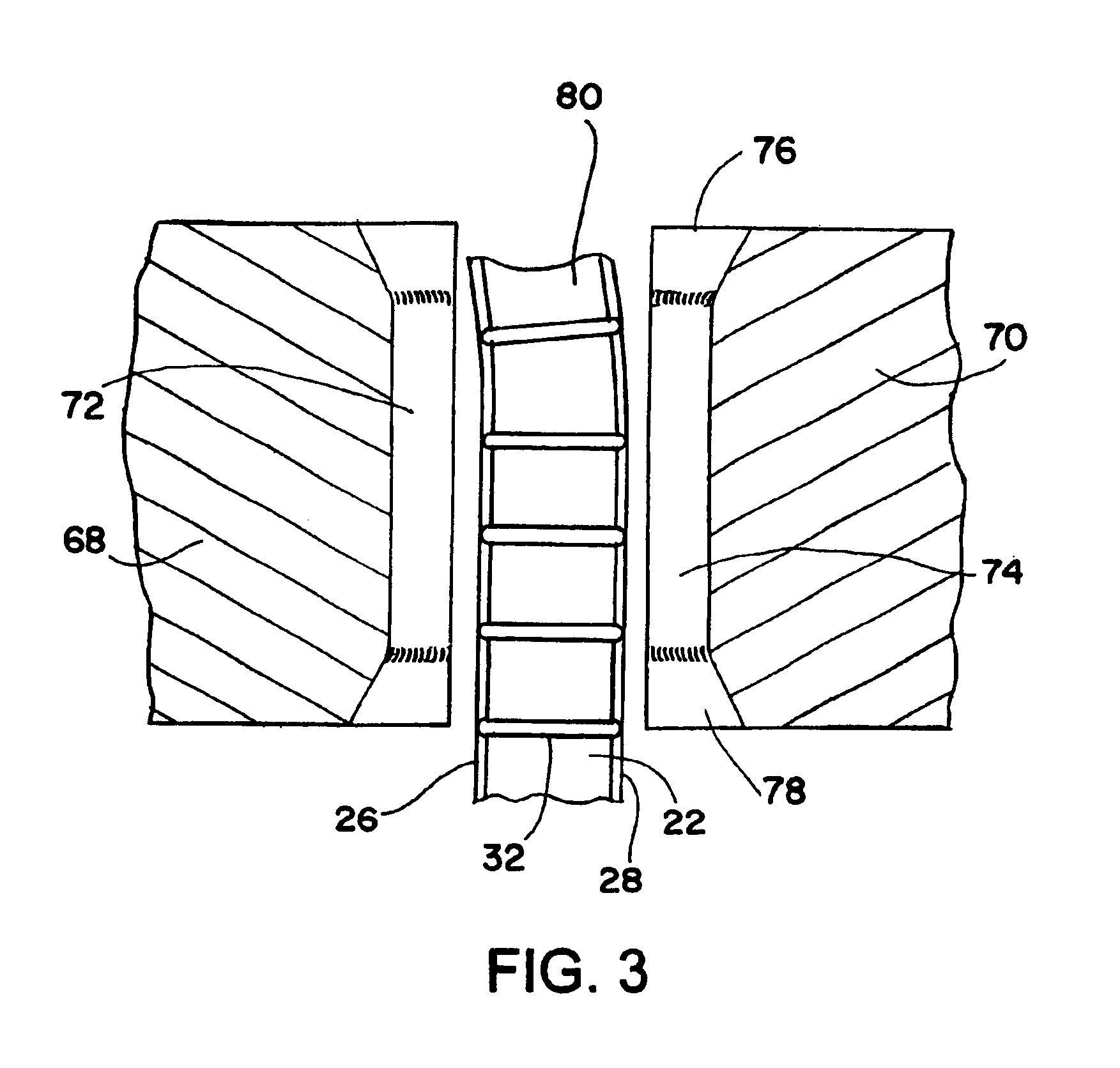Deformed reinforcing bar splice and method
a reinforcing bar and splicing technology, applied in the direction of manufacturing tools, couplings, other domestic articles, etc., can solve the problems of high cost of bar splicing to achieve the desired minimal increase in strength, the ability of couplings to normally and the inability of couplings to achieve bar break tensile capability at a considerable cost in energy and handling. achieve the effect of increasing the tensile properties at the thread area
- Summary
- Abstract
- Description
- Claims
- Application Information
AI Technical Summary
Benefits of technology
Problems solved by technology
Method used
Image
Examples
Embodiment Construction
[0030]Referring initially to FIG. 1 there is illustrated the components of a taper thread deformed reinforcing bar splice in accordance with the present invention. The splice includes bar 20, bar 22, and the joining internally threaded sleeve 24. While the bars shown are of the same size, they can vary in bar size by use of well known transition couplers with different size threads in each end matching that of the bars. The bar 22 and its threaded end will be described in detail.
[0031]Typically, the bar is deformed during the rolling process and is provided with longitudinal diametrically opposite long ribs shown at 26 and 28 on opposite sides of the bar. Included are circumferential ribs 30 somewhat offset from circumferential ribs on the opposite side as shown at 32.
[0032]It will be appreciated that commercially available reinforcing bar may be provided with a wide variety of rib or deformation patterns. Such patterns usually include the longitudinal diametrically opposite ribs an...
PUM
| Property | Measurement | Unit |
|---|---|---|
| length | aaaaa | aaaaa |
| diameter | aaaaa | aaaaa |
| axial length | aaaaa | aaaaa |
Abstract
Description
Claims
Application Information
 Login to View More
Login to View More - R&D
- Intellectual Property
- Life Sciences
- Materials
- Tech Scout
- Unparalleled Data Quality
- Higher Quality Content
- 60% Fewer Hallucinations
Browse by: Latest US Patents, China's latest patents, Technical Efficacy Thesaurus, Application Domain, Technology Topic, Popular Technical Reports.
© 2025 PatSnap. All rights reserved.Legal|Privacy policy|Modern Slavery Act Transparency Statement|Sitemap|About US| Contact US: help@patsnap.com



